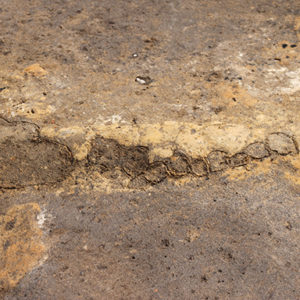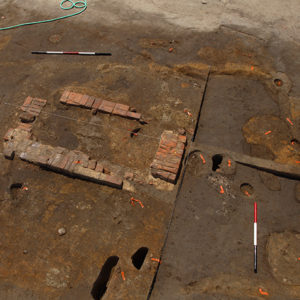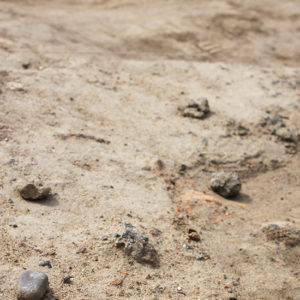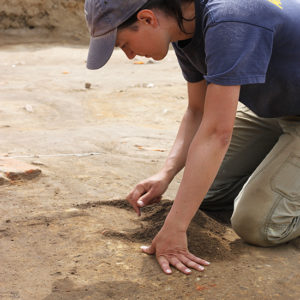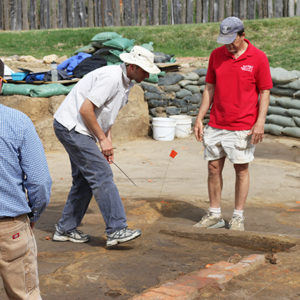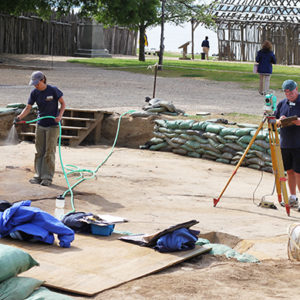With the arrival of warm weather, the Jamestown Rediscovery archaeological team has headed back outdoors to continue excavations at James Fort. Near the center of the fort they have discovered a new fort-period structure approximately 12′ x 18′ in size. Little is known about the building, but its alignment with the fort’s eastern wall and the fact that its soil stains cut no structures while they are cut by a slag pit containing fort-period artifacts suggests that the structure dates to very early in the colony’s existence.
A series of postholes and trenches are all that remains of a 12′ x 8′ fort-period building located near the north bulwark of James Fort. The structure’s remains don’t cut any earlier stains, indicating that this structure is the oldest at this location. (For an explanation of features “cutting” other features, please see August 2006’s update.) The building runs parallel to the eastern palisade wall and is itself cut by a slag pit filled with fort-period artifacts. The slag pit is one of two nearby, suggesting metallurgy was conducted in the vicinity.
Partially covered by a ca. 1660s building that may have burned during Bacon’s Rebellion, the fort-period structure contains the later building’s brick fireplace near its center. Excavations of one of the long linear stains marking the structure’s wall has revealed soil stains from the presence of the vertical studs which, along with a mud-based plaster, would have made up the walls. Just to the west of the building, a shallow bowl-shaped feature is being excavated. Thought to also date to early in the fort-period, an Archaic projectile point was found during its excavations.
Two coins have been excavated from the building, only one of which is currently identifiable due to corrosion. An English silver half groat was found, dating between 1566 and 1571.
related images
- Excavation of the wall stain revealed the individual post molds for the wall studs
- Overall shot of the structure
- The long wall stain and postholes both belonging to the structure and to later buildings
- A view of the surface of the slag pit
- Archaeologist Mary Anna Richardson excavating the feature
- Archaeologists Dave Givens, Danny Schmidt, and Don Warmke at work on the fort-period feature
- Archaeologists Mary Anna Richardson and Dan Smith prepare the site for photographs and transit mapping



